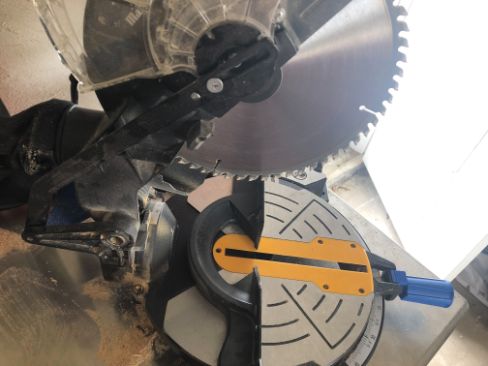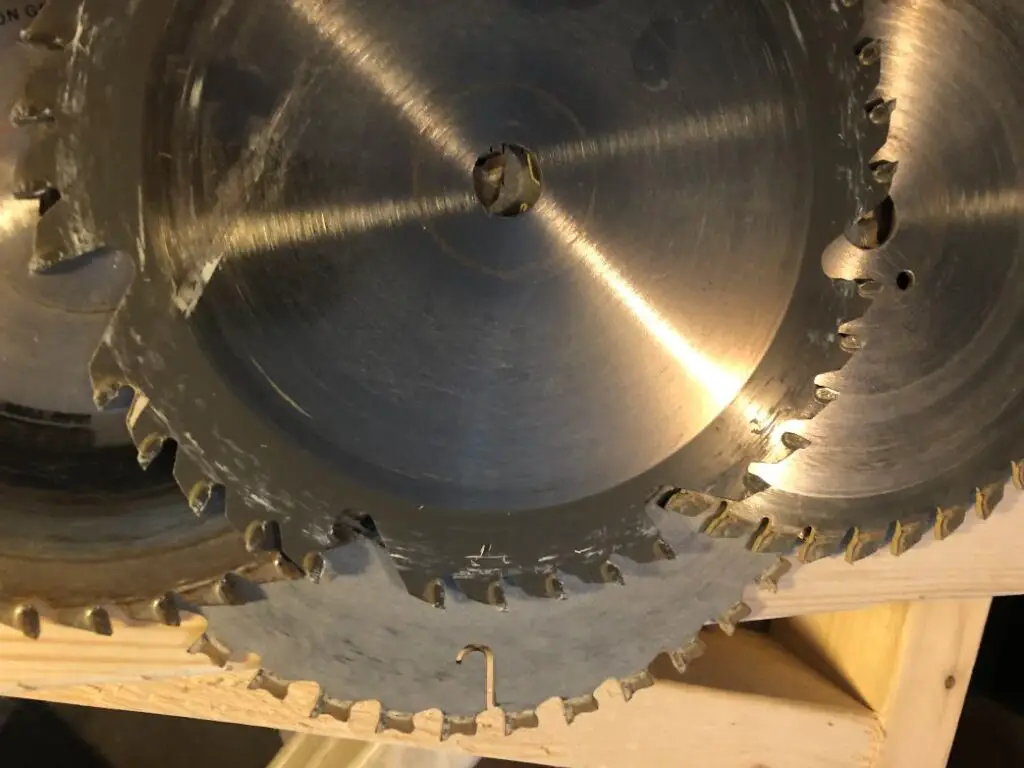Carpentry and woodworking is an art, and some power tools, such as radial arm saws vs miter saws, make it SO! Both miter saw and radial saw were invented to reduce the hassle and time involved in the undertaking of various woodwork projects. Between these two power tools, the radial arm saw is the oldest. At the time when it was invented, it revolutionized the woodwork industry as many experts grabbed it. On the other hand, a mitre saw is relatively new in the industry and it has more advanced technological features than the conventional radial arm saw.
Although radial arm saw and miter saw have a number of similarities as they both make accurate and precise cutting of woods, they vary in multiple ways. The radial arm saw is specially designed for cutting through thicker lumber due to its higher cutting depth. On the other hand, a miter saw is ideal for precise and accurate bevel crosscuts on thicker pieces of wood. When stuck on which of the two power tools to go for, it is essential that you select one that will fully meet your cutting needs.
Although radial arm saws are versatile and can be used in a vast array of carpentry and woodwork projects, they have become less popular over the years due to stiff competition by state of the art, modern miter saws built using the latest technology. Miter saws are designed with safety features, which make them safe for use, unlike the radial arm saws, which have minimal safety specifications as they could easily expose the users to unprecedented accidents. However, both power tools are hazardous, and the safety guideline should be followed to the latter while using them.
This piece will enlighten you on the similarities and differences between a radial arm saw and a miter so that you may decide which is ideal for you.
Let’s get to it.
Table of Contents
What is the Difference between a Radial Arm Saw and a Miter Saw?

Radial arm saws have advanced cutting depths, which makes them ideal for cutting through thicker pieces instead of a miter saw, which does not have this capability. A miter saw is perfect for cutting less small but thicker pieces of wood. To increase the efficiency of these power tools and to increase your productivity, it is wise that you use each power tool for its exact functionality. Ignoring this will not only be practically impossible but will also be compromising on your safety.
Unlike miter saws, which are lightweight and portable, they can be easily moved from one workstation to another. Radial arm saws cannot be moved around and require a station for operating, they are also heavy and could occupy a more significant surface area.
Radial arm saws are versatile as they are suitable for a wide range of cuts; on the other hand, miter saws have limitations on the number of cuts they can make. For instance, it may be challenging to use a miter saw to rip boards lengthwise.
Although both miter saw and radial arm saw uses a mounted spinning blade to make cuts, the radial arm saw has shortcomings when it comes to a safety mechanism. The blades of these power tools spin at an electric speed. If not careful, they could be dangerous. However, miter saws have improved safety features.
Different brands manufacture miter saws with a laser guide, and radial arm saws do not use this feature. The laser beam guides the carpenter in making accurate and precise cuts. This feature helps to produce clean and tidy work by eliminating chances of mistakes and errors.
Here’s a video showcasing what radial arm saws are all about:
What’s Better: Radial Arm Saw vs Miter Saw?
Deciding on which power tool is the best between a radial arm saw and a miter saw will depend on your cutting needs and also on your preference. Although radial arm saw is ideal for making different types of cuts and various woods, they have minimal safety specifications. Many people may opt to go for miter saws. Radial arm saw is old school and may be hard to compete with miter saws specially designed for accuracy and precision.
If you are undertaking a rigid and wide-scale woodwork project, a radial arm saw may come in handy due to its robust ability to make different types of cuts on lumber and wood. However, miter saws are specially designed to offer precise angle cuts but may not be used to rip lumber.
Although miter saws are not suitable for all types of cuts, they tend to be more superior due to the advanced technology used in their production.
Why are Radial arm saws no longer made?

While you’re not likely going to find a radial arm saw at your local big box home improvement store, these saws are still made. Radial arm saws are still used in many industrial and commercial applications, they just aren’t common for home use, and they never truly have been. Since power tools have been common in homes, the miter saw and table saw have been easier choices for homeowners. There are a couple main reasons why radial arm saws are less common today than in the past, because they can be dangerous and to an extent they are obsolete.
Are Radial Arm Saws Obsolete?
Over the years, the woodwork and carpentry industry has undergone a revolution due to the introduction of more advanced power tools, which has increased efficiency and production of more precise and accurate cuts. Although the radial arm saws have not become obsolete, they are rarely used by woodworking hobbyists.
Most professionals prefer modern saws such as the miter saws as they are more efficient and have made work more manageable. Also, the modern power tools are safer to use as compared to radial arm saws, which expose the users to hazards.
Does anyone use radial arm saws anymore?
Certain uses and applications might find a good use for a radial arm saw, but it would be uncommon to find a use where a hobbyist needs a radial arm saw. You might have uses where a radial arm saw would have made a single job easier, but still likely doesn’t justify owning another tool when you have one that meets the demand.
Why are Radial Arm Saws so Dangerous?
Unlike the modern power tools, which are designed with various safety features to protect the user from any injury while undertaking the different carpentry duties. Radial arm saws have minimal safety features and could expose the user to much danger as the saws are more exposed.
Radial arm saws were designed prior to modern safety standards and while manufacturers have added safety features, the radial arm saw by nature is going to be more dangerous than a table or miter saw.
The radial-arm saws tended to cause more injuries as the blade’s rotation could pull the saw into the operator and onto the work. Miter saws tend to be safer as they use different methods, which are safer.
Can a Radial Arm Saw Replace Table Saw?
Although both radial arm saw and table saw have similarities when it comes to functionality, radial arm saws tend to be more superior as it has more adaptation for attachments for jobs that do not need cutting such as drum sanding, surface planning, and routing. Table saws do not typically provide attachments for non-sewing jobs like sanding.
Additionally, radial arm saws are easier to maintain as their overhead blade can be quickly aligned. If your workshop has limited space, you can position your radial arm saw against the wall. On the other hand, a table saw must be positioned away from the wall to give room for bigger workpieces to be moved across the blade.
Generally, radial arm saw and a miter saw have many similarities when it comes to functionality but miter saws tend to be more superior due to the advanced safety features and precision in cutting. That said, the choice between these two boils down to user needs and preferences.

